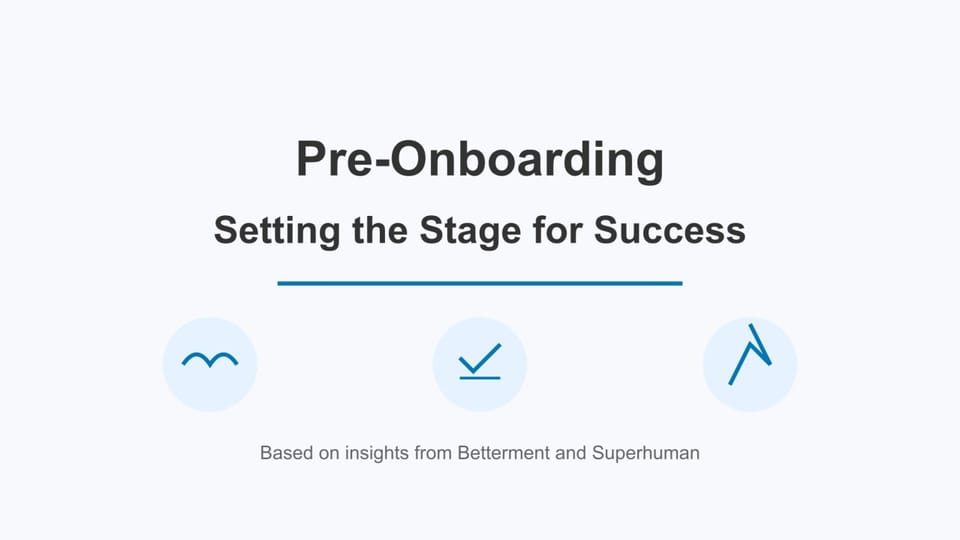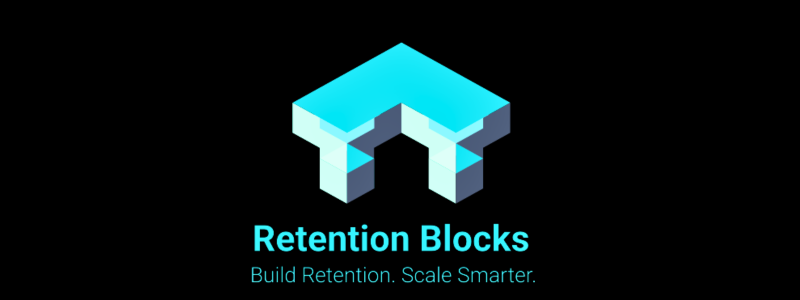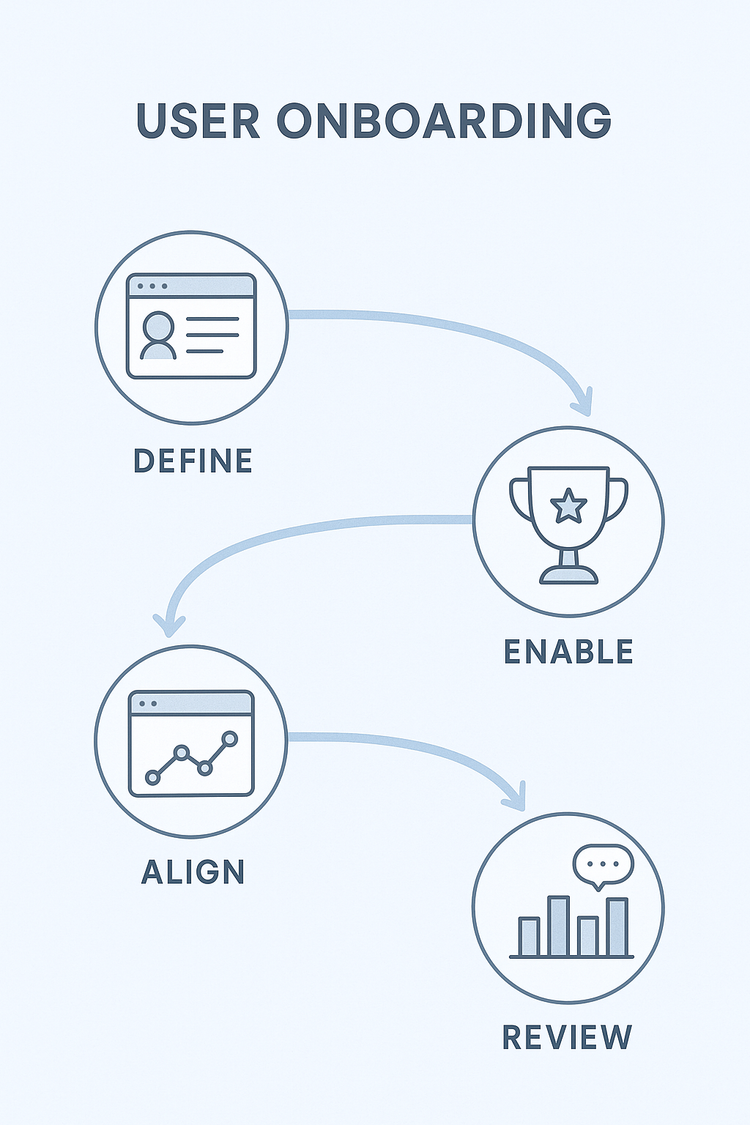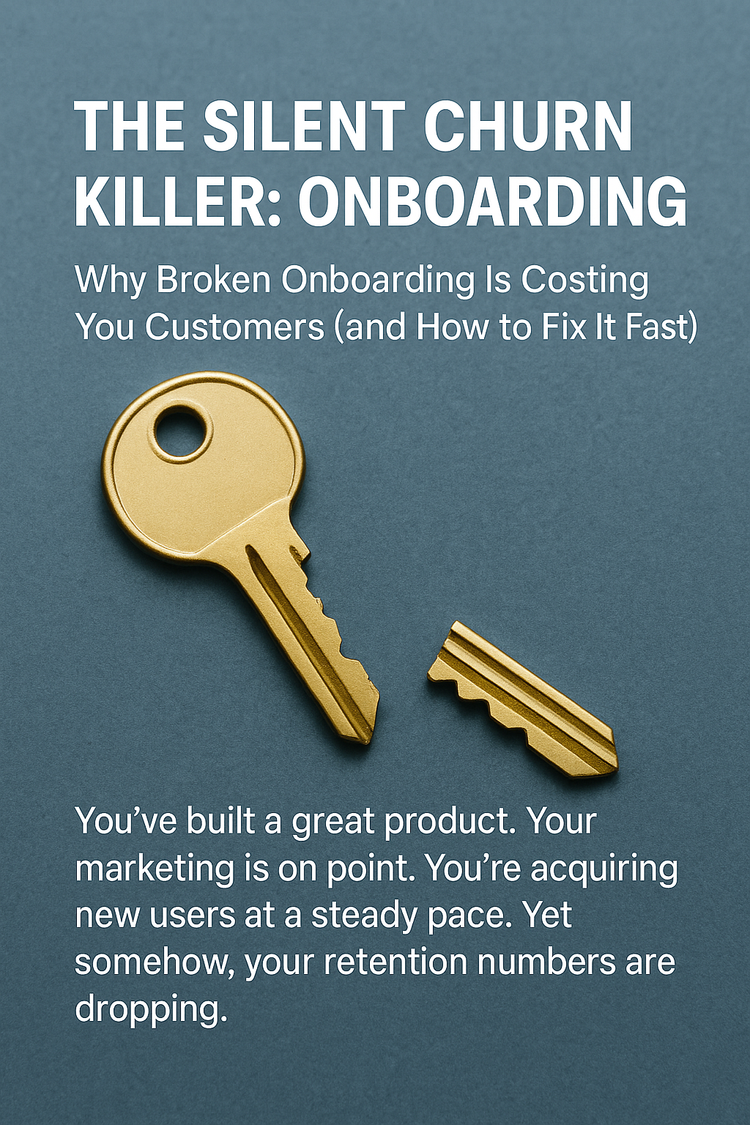The First 90 Days: Pre-Onboarding - Setting the Stage for Success

The client experience begins long before the actual onboarding process. The pre-onboarding phase—the period between contract signing and formal onboarding—presents a crucial opportunity to lay the groundwork for a successful partnership. According to Betterment's resource "4 Ways to Wow Your Clients in Their First 90 Days" and insights from "Superhuman's Onboarding Strategy Breakdown," how you handle this initial stage can dramatically influence the trajectory of your client relationships and user engagement.
Why Pre-Onboarding Matters
Pre-onboarding sets the tone for your entire client relationship. During this phase, clients are often experiencing a mix of excitement and anxiety about their decision. By implementing thoughtful pre-onboarding strategies, you can:
- Reinforce their decision to work with you
- Establish clear communication channels
- Set realistic expectations for the partnership
- Build confidence in your processes
- Create momentum before formal onboarding begins
- Accelerate user activation and engagement, as demonstrated by Superhuman's approach
Key Pre-Onboarding Strategies
- Set Clear Expectations
The Betterment resource emphasizes that managing expectations is critical during the first 90 days. Before formal onboarding begins, clearly communicate:
- What clients can expect in terms of communication frequency
- Who their main points of contact will be
- The timeline for implementation or service delivery
- What you'll need from them to ensure success
- How progress will be measured
Creating a simple welcome digital resource that outlines these expectations can help clients feel secure in their decision to partner with you.
2. Establish Communication Protocols
Effective communication is the foundation of successful client relationships. During pre-onboarding:
- Define preferred communication channels
- Set expectations around response times
- Schedule initial check-in meetings
- Introduce key team members who will be working with the client
3. Prepare Clients for Success
Help clients prepare for the formal onboarding process by:
- Providing a checklist of information or materials they'll need to gather
- Sharing educational resources about your services
- Offering case studies that illustrate successful outcomes
- Creating a timeline visualization of the onboarding journey
- Answering frequently asked questions before they arise
4. Deliver an Early Win
As Betterment suggests in their "4 Ways to Wow Your Clients" resource, finding opportunities to deliver value even before formal onboarding creates positive momentum. Consider:
- Providing a complimentary assessment or analysis
- Sharing a relevant industry report or personalized insights
- Inviting them to an exclusive webinar or client event
- Sending a thoughtful welcome package that demonstrates your understanding of their needs
5. Design for Frictionless Experiences
Drawing from "Superhuman's Onboarding Strategy Breakdown," we can see the importance of removing friction points during pre-onboarding:
- Identify potential roadblocks in your current process
- Streamline necessary paperwork or information gathering
- Create step-by-step guides for technical setup requirements
- Offer personalized support for complex aspects of preparation
- Use automation thoughtfully to enhance rather than replace the human experience
6. Implement High-Touch Personalization
Superhuman's success with high-touch personalization offers valuable lessons for pre-onboarding:
- Conduct personalized welcome calls to understand specific client needs
- Tailor pre-onboarding materials to address individual client priorities
- Assign dedicated representatives who can build relationships before formal onboarding
- Customize educational resources based on client sophistication and requirements
- Create personalized success roadmaps that address each client's unique challenges
Implementing Your Pre-Onboarding Strategy
To develop an effective pre-onboarding strategy:
- Map the client journey from contract signing to formal onboarding
- Identify potential pain points or moments of uncertainty
- Develop resources and touchpoints to address these moments
- Create templates and systems to ensure consistency while allowing for personalization
- Build habit-forming elements into your process, as highlighted in Superhuman's approach
- Gather feedback to continuously refine your approach
Building Routines That Stick
The Superhuman resource offers valuable insights into designing experiences that become habitual for users. During pre-onboarding, you can:
- Introduce clients to key workflows they'll use regularly
- Provide small, meaningful tasks that demonstrate value quickly
- Create "aha moments" that show how your solution addresses their pain points
- Establish routines that will continue throughout the relationship
- Build anticipation for the full experience to come
Conclusion
Pre-onboarding isn't just about administrative preparation—it's about creating a foundation of trust, clarity, and value that sets the stage for a successful partnership. By implementing thoughtful pre-onboarding strategies as outlined in Betterment's "4 Ways to Wow Your Clients in their First 90 Days" and adopting the high-touch, personalized approach showcased in "Superhuman's Onboarding Strategy Breakdown," you can ensure your clients feel confident in their decision to work with you, excited about the journey ahead, and primed for active engagement with your services.






Member discussion